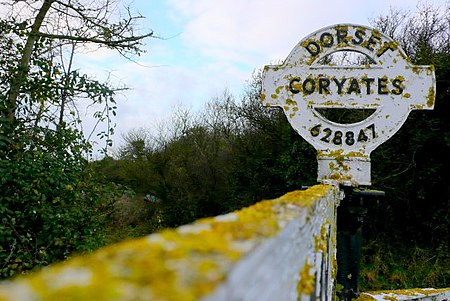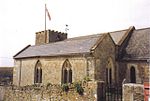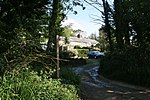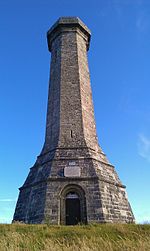Coryates Halt railway station
Disused railway stations in DorsetFormer Great Western Railway stationsPages with no open date in Infobox stationRailway stations in Great Britain closed in 1952Railway stations in Great Britain opened in 1906 ... and 2 more
South West England railway station stubsUse British English from February 2018

Coryates Halt was a small railway station on the Abbotsbury branch railway in the west of the English county of Dorset. It consisted of a single platform and GWR pagoda shelter. Opened on 1 May 1906, it was sited next to an overbridge carrying a lane to a dairy and the villages of Coryates and Shilvinghampton. Part of a scheme that saw several halts opened on the GWR and other railways to counter road competition, it was served by Railmotors, carriages equipped with driving ends and their own small steam engine.
Excerpt from the Wikipedia article Coryates Halt railway station (License: CC BY-SA 3.0, Authors, Images).Coryates Halt railway station
Cheese Lane,
Geographical coordinates (GPS) Address External links Nearby Places Show on map
Geographical coordinates (GPS)
| Latitude | Longitude |
|---|---|
| N 50.6609 ° | E -2.527 ° |
Address
Coryates
Cheese Lane
DT3 4HW , Portesham
England, United Kingdom
Open on Google Maps








